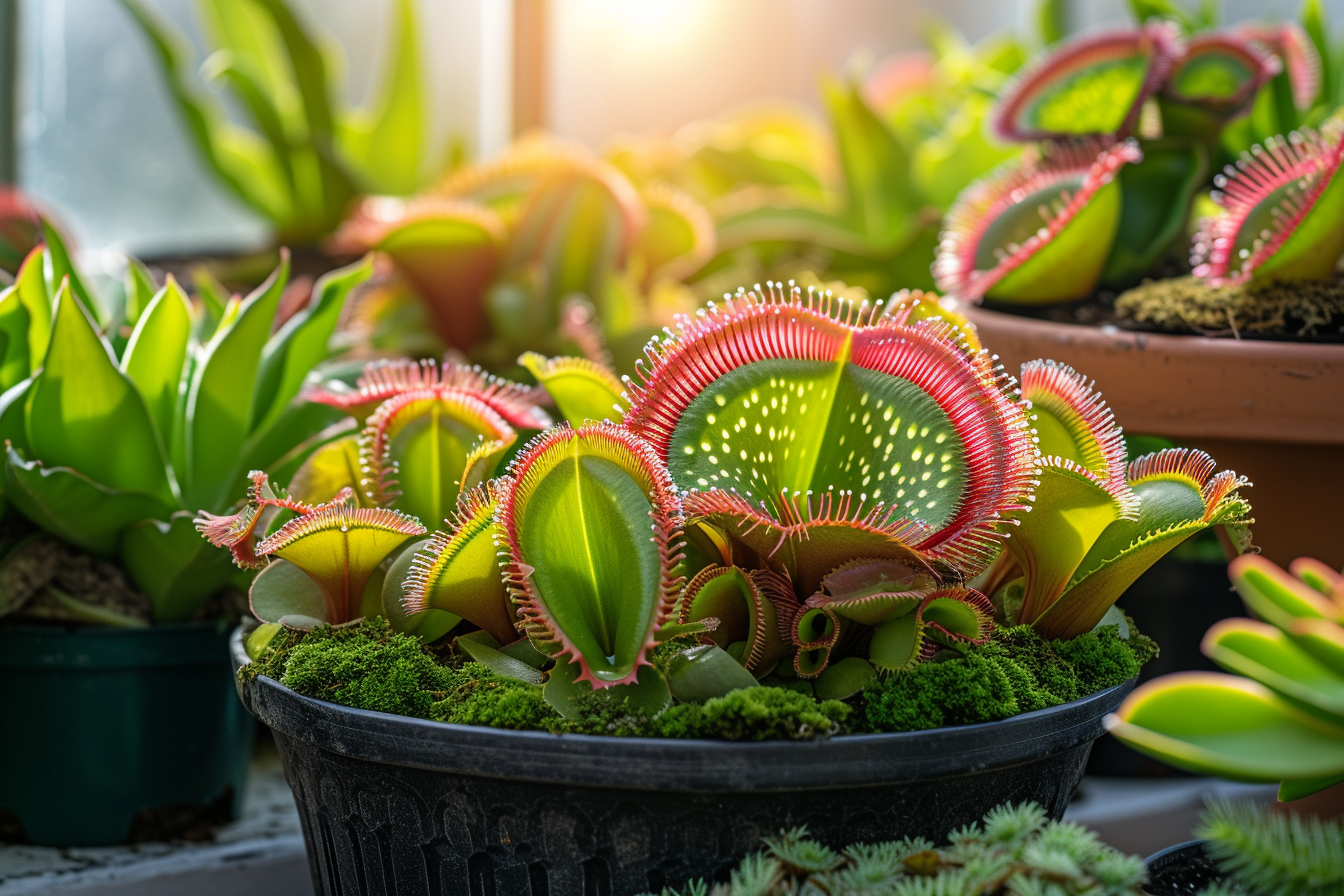Carnivorous plants, with their unique appetite for insects and other small creatures, have fascinated botanists and hobbyists alike for centuries. These remarkable species have evolved in nutrient-poor environments, developing ingenious traps to supplement their dietary requirements with the nutrients gleaned from their prey. Understanding the specific needs and behaviors of these plants is essential for successful care and maintenance.
Prime habitats for carnivorous plants
Carnivorous plants thrive in environments that emulate their natural habitats. Most species originate from boggy, acidic soils with high humidity and plenty of sunlight. When growing these plants indoors, creating a micro-habitat that mimics these conditions will greatly benefit their growth and health.
Soil composition
The right soil mix is critical for carnivorous plants. Ordinary potting soil or fertilized substrates are detrimental to their health because they are adapted to grow in poor soils. A mixture of sphagnum peat moss and perlite or sand, in equal ratios, usually offers the right balance of drainage and moisture retention. Avoid lime and compost, which can introduce minerals and nutrients that might harm the plants.
Water quality
Pure water is another requisite for taking care of carnivorous plants. They are sensitive to minerals found in tap water, which can build up in the soil and cause harm over time. Rainwater, distilled water, or reverse osmosis water is best to avoid these issues. Ensure the plants’ soil remains moist but not waterlogged, using trays to maintain consistent humidity is a common practice.
Sunlight and temperature
Adequate sunlight is paramount for these unusual flora. Most carnivorous plants do best with full sun exposure for at least six hours daily. Windowsills facing east or west often provide ideal conditions; however, some species may require shading during the hottest part of the day.
Temperature control also plays an integral part, especially for temperature-sensitive species like Venus flytraps, which require a dormancy period with cooler temperatures in winter. Researching individual species’ needs and adjusting the environment accordingly will ensure they remain healthy year-round.
Feeding your carnivorous plants
Natural insect capture is a unique aspect of carnivorous plant care. Generally, if the plant is outdoors in its growing season, it will capture enough food on its own. Supplemental feeding is rarely necessary and should only be done sparingly, using appropriate-sized insects. It is vital to avoid feeding these plants with human food or pet food, which can be harmful to them.
Special considerations for different species
Diverse carnivorous plants require tailored care approaches. Venus flytraps, for example, prefer a winter dormancy period, while tropical pitcher plants might grow year-round without dormancy. Understanding the natural cycle of each species is key to providing the appropriate care.
Venus flytraps (dionaea muscipula)
Venus flytraps are iconic among carnivorous plants, known for their snap traps. They thrive with high humidity and lots of sunlight but require cooler winter temperatures to mimic their natural dormancy period.
Pitcher plants (sarracenia/nepenthes)
Pitcher plants come in many varieties, including the North American Sarracenia and tropical Nepenthes. Each has its own requirements, but both enjoy high humidity and ample sunlight. Nepenthes, being from tropical regions, often do well in household temperatures without dormancy.
Sundews (drosera)
Sundews are recognized for their sticky, dew-covered leaves that trap insects. They enjoy similar conditions to other carnivorous plants but can often tolerate lower light levels.
Propagation and repotting
Propagation can be achieved through various methods like seed germination, division, cuttings, or tissue culture. Each species has its preferred method of reproduction, with some being easier to propagate than others.
Repotting should be done carefully to avoid damaging the roots. It’s typically necessary every one to three years, depending on the growth rate of the plant. Always use the appropriate soil mix and sterilize tools before use to minimize the risk of introducing pathogens.
Common pests and issues
Like all plants, carnivorous varieties are susceptible to pests and diseases. Spider mites, aphids, and fungal infections can all pose threats. A careful examination of plants regularly will allow for prompt action. Organic or specialized treatments may be needed, applying care to avoid any harmful to the species you are tending to.
Community and resources

Joining a community of fellow carnivorous plant enthusiasts can provide a wealth of knowledge and support. Numerous online forums, social media groups, and local societies exist where experiences and tips are shared. Books and websites dedicated to carnivorous plants can also offer in-depth information tailored to your care journey.
The proper care of carnivorous plants requires a blend of understanding, attentiveness, and a willingness to replicate their natural conditions as closely as possible. By meeting the specific needs of your flesh-eating flora, from the moisture level of their soil to the quality of their water, and from their light requirements to their feeding habits, you set the stage for a thriving and spectacular display of nature’s ingenuity. With these tips in mind, both novices and experienced gardeners can enjoy the intriguing world of carnivorous plant cultivation. Whether you favor the snap of a Venus flytrap, the subtle allure of sundews, or the exotic pitchers, nurturing these unique plants can be a rewarding and enlightening endeavor in the plant kingdom.











